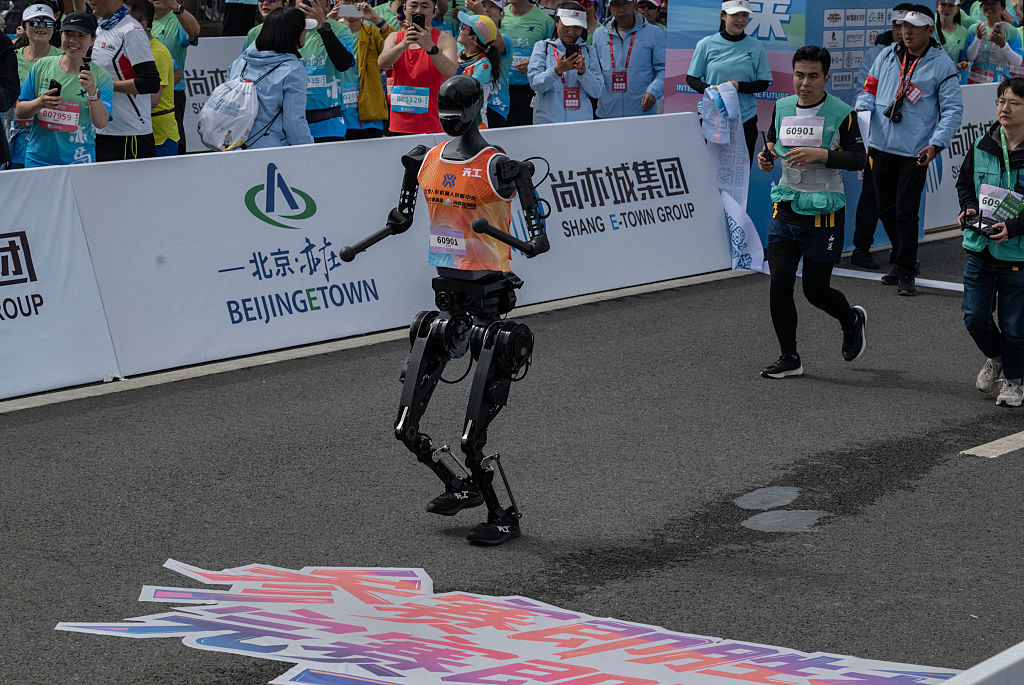Beijing Hosts World’s First Humanoid Robot Half-Marathon
This past Saturday, Beijing’s E-Town technology hub was the site of an unprecedented event—the first-ever humanoid robot half-marathon. This competition witnessed 21 humanoid robots alongside a large field of human participants, showcasing the current capabilities and limitations of robotic technology.
Performance of the Robots
According to a report by Bloomberg, the standout performer was a robot named Tiangong Ultra, created by the state-supported X-Humanoid research institute. Tiangong Ultra completed the race in a time of two hours and 40 minutes—a stark contrast to the winning time of the event’s top human runner, who finished in one hour and two minutes.
While Tiangong Ultra’s time might not be impressive when compared to human standards, it did require human assistance to reach that finish line. Specifically, a human contestant sported a signaling device on their back, enabling the robot to mimic their movements. Most of the other participating robots were operated remotely by human handlers.
Challenges Faced by Competitors
The overall performance of the humanoid robots varied significantly. Only four robots managed to finish the race within the allotted four-hour time limit, and many others took over three hours to complete the course. Some competitors encountered serious issues even before the race began. For instance, a robot named Shennong collided with a human support runner and subsequently crashed into a fence, resulting in significant damage. Another competitor, known as Little Giant, temporarily halted its progress due to technical difficulties, emitting smoke from its head.
Participation and Specifications
The event featured robots from various Chinese companies and student groups. To qualify for the race, robots had to possess a humanoid appearance and utilize a bipedal movement pattern. They were assigned separate lanes from the human runners to ensure safety, with staggered start times implemented to prevent collisions.
Robots were permitted to switch batteries during the race, a necessity for maintaining their operational functionality, as demonstrated by Tiangong Ultra, which had its battery replaced three times throughout the event. Further, teams could substitute robots if needed, albeit with a penalty to their time.
Reflections on the Event
In a statement to Reuters, Tang Jiang, the Chief Technology Officer of X-Humanoid, asserted, “I don’t want to boast but I think no other robotics firms in the West have matched Tiangong’s sporting achievements.” This sentiment speaks to ambitious aspirations within the realm of robotic development.


